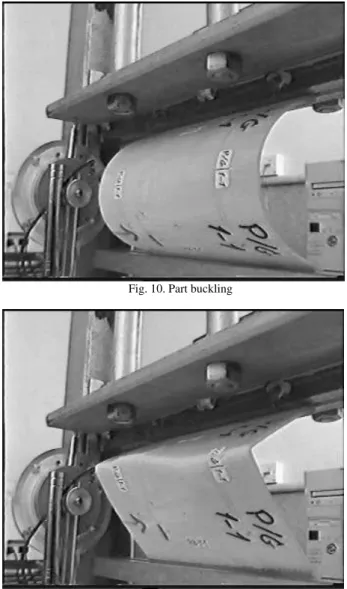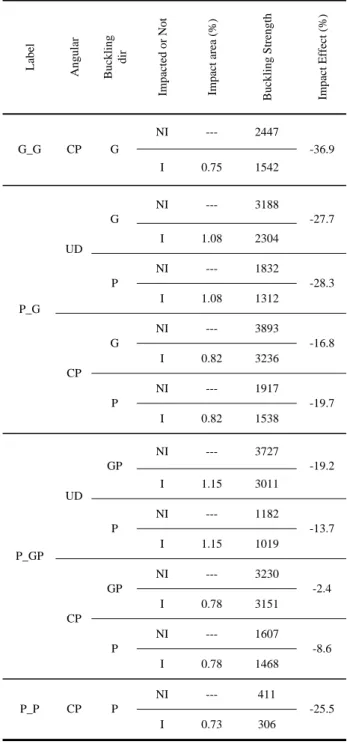The Comparison between Impact Resistance of Woven Fabric Composites and Cross-ply Unidirectional Composites
全文
(2) fabric is covered by polyamide cover [7]. Application of second or third part of reinforcement material can improve composite properties by improvement in reinforcement and resin interface properties. The determination of composite materials, blending method and plying geometry is depended to composite properties that required by materials designer. The considered mechanical property in this research is the impact resistance of glass fabric composites. The effect of dimensions [8], thickness [9], [10] and plying geometry of reinforcement layers [11], [12] on the impact resistance are studied in some papers. Also in other papers the fast reduction of residual strength composite due to initial low speed impacts has been studied [8]. The figure 6 shows this fast reduction of residual strength. In some cases non visible cracks and destroying can reduce even up to 50% of pressure strength. Fig. 2. Plain weave. Fig. 4. Triaxial braid Fig. 3. Triaxial weave. In respect of high application rate of woven fabric composites and more complexity in study of their mechanical behavior, in this work the improvement of woven fabric composites has been studied. The application of glass fabric composites is more than other kinds of fabric composites due to its low weight and high strength but its impact resistance is very low. These composites are tight and very brittle in the way that the impacts with low inertia can make cracks in their structure and with impact repetition the whole structure would fail and be destroyed. The existing reports about ships made of these composites or car bodies and flies and wings are evidences for this behavior. The first effect of initial impact is reduction of general strength of structure specially reduction in pressure strength. The effect of impact initially would be observed by matrix cracking, then delamination and finally fibre failure. There fore the effect of impact by residual strength under buckling can be study. Currently, in order to obtaining the best properties of composites materials, the reinforcement material is itself composed of two or more materials. In these cases many reinforcement material in different methods are plied in matrix material and plays their roles. Using of glass and nylon staple fibre blends [3], [4] and glass and polypropylene filament fibres in form of sheeth-core [5] and fabric layers in form of one by one from glass and banana fibres [6] are some examples. In some cases in order to improvement of matrix and reinforcement interface, the glass. Fig. 5. Multi-axial warp knit.
(3) Fig. 6. Reduction of residual strength due to initial low speed impact. The destroyed area due to impact is also an important criteria for residual strength reduction. In this observation the woven fabric composites are much better than orthogonal uni-direction composites but the destroying due to impact in composites reinforced by glass fabrics are too considerable[1]. Figure 7 shows better control of destroyed region due to impact in woven fabric composites.. Fig. 7. Better control of impact destroy in woven fabric composites However it seems that simultaneously application of more flexible yarns such as polyester yarns with glass yarns in woven fabrics, can make better binding between reinforcement material and resin in polyester composites and improves interface properties and also reduces the brittleness of final composite material. 2. Experiments The glass filament yarn with count of 100 (tex) and polyester filament yarn with count of 150 (den) have chosen for weaving of. samples and their tensile strength are measured. After warp beam and pirn preparation, the required fabric samples are woven on a shuttle loom. in order to comparison between different samples, the weight of fabrics per area unit have taken constant by changing of weave density. The weaving of hybrid glass and polyester fabrics due to their different extensibility are required to more accuracy. The composite plates with dimension of (15*15) centimeters are prepared by glass, polyester and hybrid glass-polyester fabric samples. The applied resin for all composite samples was polyester resin type GRP196. The 5 plying arrangement of composite samples are selected in form of unidirectional and cross ply, as shown in figure 8. Table 1 shows the fabrics structure and the kind of resin and composite sheets geometry. After appearance observation, coding and tab putting, the composite parts are prepared for impact test. The impact value have to be equal for all of the composite samples in Such a way effects of all samples but any sample should not be broken by impact. The impact test carried out by 1812 grams conical weight dropped from 25 centimeters altitude. The destroyed area due to impact is measured by c-scan test and image processing in MATLAB software media. This software with high accuracy contrast of color changing due to impact and considering the composite area in form of color contrast by a 0 and 1 matrix, can identify the destroyed area percent in respect of whole area. The figure 9 shows the form and destroyed area percent for three produced composite samples. In order to measure the residual strength, carrying out buckling test is necessary and therefore all of composite samples, impacted and non- impacted, are tested for bucking. The hounsfield apparatus and a 500 kilograms force measuring apparatus with 50 grams accuracy are used for buckling test. In buckling test the moveable jaw in form of simply support with speed of 1 milimeter per minute moved into fixed jaw. With this speed the breaking strain would be much more than high speed moving of jaws. For each 0.016 mm jaw movement, one set of required data is recorded by computer. Finally, the buckling curve and maximum buckling force of composite parts are obtained. Figures 10 and 11 show the some phases of these tests on a sample. The comparison between maximum buckling force of impacted sample and non-impacted sample from each kind of composite samples, can measure the strength reduction due to impact..
(4) G_G P_P. G_G. P_G(UD). P_G(CP). P_GP(UD). P_GP(CP). P_G. P_GP Fig. 8. Plying arrangement of fabrics in composite sheets. Fig. 9. Impact destroyed area identify. Table 1. Fabrics structure and used resin and composite sheets geometry Fabric. Resin. Label. Warp. Weft. Warp den (/Cm). Weft den (/Cm). Weight in warp dir (g/m). Weight in weft dir (g/m). G_G. Glass (101 tex). Glass (101 tex). 5. 10. 53.5. 107. Polyester (150 den). Glass (101 tex). 26. Polyester (150 den). GlassPolyester. 26. P_G. P_GP. 10.5. 18. 47.5. 46. 114. 101+15.75. Weight (g / m 2 ). 160.5. 161.5. 162.75. Composite. Resin. Angular. Buckling dir. GRP 196. UD. G. CP. G. UD. G P. CP. -. UD. GP P. CP. -. GRP 196. GRP 196.
(5) Fig. 10. Part buckling. applied impacts increases of crack lengths in glass yarn direction although decreases the number of cracks. The most important mechanical parameter which is considerable is residual strength or pressure strength reduction percent of composite material. Regarding to impact and buckling test results which are given in table 2, it can concluded that the most decrease percent of pressure strength due to impact is for (G_G) composite samples and the least decrease percent is for composites which reinforced by hybrid fabrics. Also among hybrid composite samples, the least decrease percent of pressure strength is for (P_GP) composite sample with cross ply arrangement. In other word it can concluded that by adding the polyester yarns to glass yarns in reinforcement fabric which used in composite material, the impact resistance of composite would be improved and more uniform distribution of glass and polyester yarns (such as one glass yarn and one polyester yarn side by side in warp and weft directions), has more effect of improvement. In fact, the presence of polyester yarns between glass yarns, not only decreases of the brittleness of composite and increases of impact resistance, but also improves the binding between resin and reinforcement. The important point in comparison of maximum buckling stress is this point that replacement of glass yarns by polyester yarns, not only dos not decrease of pressure strength but also always increase it. The maximum pressure strength is belong to hybrid (P_G) composite with unidirectional plying in glass yarns direction. 4. Conclusion The woven fabric composites in comparison with uni-direction composites have considerable advantages. In respect to high application of glass fabrics in woven composites, the attention to their brittleness and impact resistance is necessary. The simultaneously application of polyester yarns with high flexibility rate in glass fabric structure in addition to cost reduction, decreases the final composite brittleness. These yarns with better 5. References. Fig. 11. Part after buckling failure. 3. Results and discussion The four parameters obtained from experimented tests are considered. These parameters are destroyed region form due to impact, destroyed area percent, destroyed modes and buckling stress reduction due to impact. By initial observation to destroyed region form due to impact, some interesting results are obtained. In composite reinforced by glass fabrics or polyester fabrics the form of destroyed region are nearly circular. For (P_P) composite samples only the first mode of destroying is observed but for (G_G) composite samples the destroying modes are going to the end. In composites reinforced by hybrid fabrics and unidirectional geometry (P_G(UD) and P_GP(UD)) the form of destroyed region are elliptical such a way that longer diameter is in glass yarns direction and shorter diameter is in polyester yarn direction. It means that matrix cracking in glass yarns direction is more extended. In hybrid parts only first mode of destroying in low intensity is visible especially for (P_GP) parts with cross ply arrangement. In case of destroying region area except (P_G(UD) and P_GP(UD)), samples there are not significant difference between other composite types. in these parts with unidirectional playing the destroyed area due to impact significantly is more than other samples and it seems that more strain of polyester yarns under. [1]. H.Nguyen. Hoa, T.Vu. Khanh, Fracture and damage in polyester/glass woven fabric composites, Damage and Fracture Mechanics VI, WIT press, 2000. [2] B.cox and G.Flanagan, Hand book of Analytical Methods for Textile Administration, NASA Contractor Report, 1997. [3] T. Adam, G. Fernando, R. F. Dickson, H. Reiter and B. Harris, Fatigue life prediction for hybrid composites, International Journal of Fatigue, volume 11, 1989, pp. 233237. [4] Dorey, G. In, Proc. Sixth Int. Conf. on Composite Materials and Second European Conf. on Composite Materials, Vol.3, pp. 3.1-3.35, (1987). [5] Beaumont, P.W.R, Riewald, P.G, and Zewben, C., Methods for Improving the Impact Resistance of Composite Materials, Foreign Object Impact Damage to Composites, ASTM STP 568, American Society for Testing and Materials, pp. 134-158, (1974). [6] J.R.Vinson, R.L.Sierakowski, The Behavior of Structures Composed of Composite Materials, Kluwer Academic Publishers, 1987. [7] M.O.W Richardson, M.j.Wisheart, Review of Low Velocity Impact Properties of Composite Materials, Composites Part A27A (1996), pp. 1123-1131, Elsevier Science Ltd. [8] G.A.O Davies and D. Hitchings and G. Zhou, Impact Damage and Residual Strengths of Woven Fabric.
(6) NI. ---. 2447. I. 0.75. 1542. NI. ---. 3188. I. 1.08. 2304. NI. ---. 1832. I. 1.08. 1312. NI. ---. 3893. I. 0.82. 3236. NI. ---. 1917. I. 0.82. 1538. NI. ---. 3727. I. 1.15. 3011. NI. ---. 1182. I. 1.15. 1019. NI. ---. 3230. I. 0.78. 3151. NI. ---. 1607. I. 0.78. 1468. NI. ---. 411. I. 0.73. 306. -36.9. G UD. -27.7. P P_G. Impact Effect (%). G. Buckling Strength. CP. Impact area (%). Buckling dir. G_G. Impacted or Not. Angular. Table 2. Impact and buckling data for composite sheets. Label. Glass/Polyester Laminates, Composites Part A27A (1996), 1147 – 1156, Elsevier Science Limited. [9] L.S.Sutherland, C.Guedes Soares, Impact on Low Fibre – Volume, Glass/Polyester Rectangular Plates, Composite Structhres 68 (2005) 13-22. [10] Cristescu, Malvern, L.E, and Sierakowski, R.L, " Failure Mechanisms in Composite Plates Impacted by Blunt – Ended Penetrators, " Foreign Object Impact Damage to Composites, ASTM STP 568, American Society for testing and Materials pp. 159-172, (1976). [11] G.C.Papanicolaou, Chr,D.Stavropoulos, " New Approach for Residual Compressive Strength Prediction of Impacted CFRP Laminates," Composites 26 (1995), pp.517-523, (1995) Elsevier Science Limited. [12] G.A.O Davies, D.Hitchings, Impact Damage and Residual Strengths of Woven Fabric Glass/Polyester Laminates, Composite Part A27 A (1996), pp. 1149-1156, ElsevierScience Ltd.. -28.3. G. -16.8. CP P. -19.7. GP. -19.2. UD P. -13.7. P_GP GP. -2.4. CP P. P_P. CP. -8.6. P. -25.5.
(7)
數據
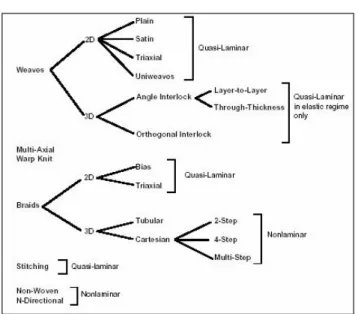

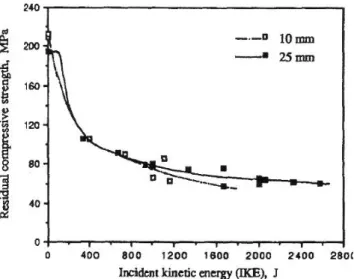
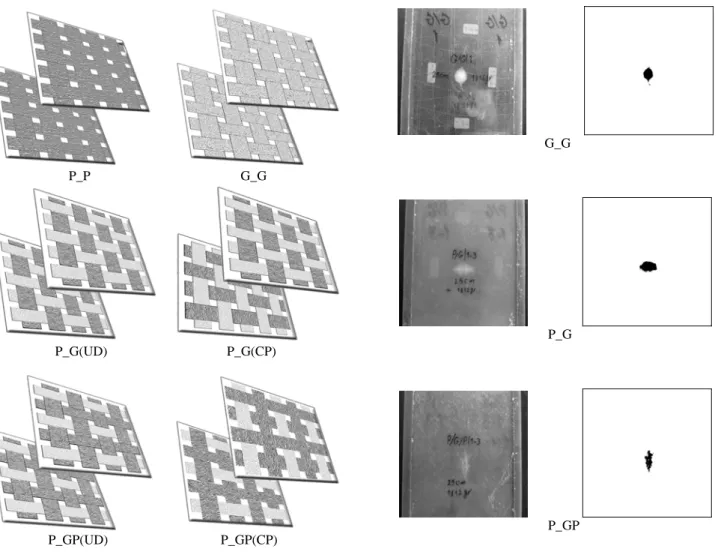
相關文件
the prediction of protein secondary structure, multi-class protein fold recognition, and the prediction of human signal peptide cleavage sites.. By using similar data, we
Other vegetable materials plaits and similar products, whether or not assembled into strips; products of other vegetable materials, bound together in parallel strands or woven,
Woven fabrics of cotton, plain weave, containing less than 85% by weight of cotton, mixed mainly or solely with man-made fibres, weighing not more than 200 g/square meter,
Impact of Early Mobilization on Glycemic Control and ICU- Acquired Weakness in Critically Ill Patients Who Are Mechanically Ventilated. Am J Phys
Faced with the external impact such as the US-China trade war and the Covid-19 pandemic, many companies in Yunlin County express that orders will not be affected
Woven fabrics of cotton, plain weave, containing less than 85% by weight of cotton, mixed mainly or solely with man-made fibres, weighing not more than 200 g/square meter,
6 《中論·觀因緣品》,《佛藏要籍選刊》第 9 冊,上海古籍出版社 1994 年版,第 1
Teachers may consider the school’s aims and conditions or even the language environment to select the most appropriate approach according to students’ need and ability; or develop
